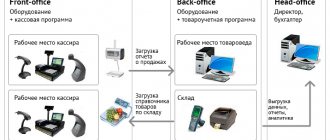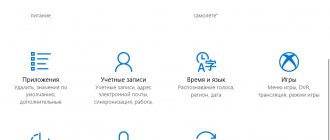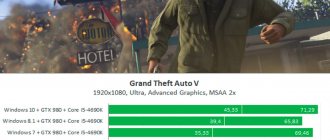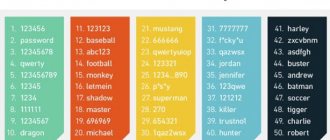| This article has been lost in time. In order not to evoke in the reader the feeling of an eternal Groundhog Day, and also so that not only elderly people can know and remember the exact dates of events, this article needs clarification. |
| « | He seems to be the king of generosity, And therefore the delight is legitimate of all those to whom he is favorable: He gives them what he can, And he himself becomes richer, The more he sacrifices in distribution. | » |
| — Goethe, Faust | ||
P2P
(
Peer-to-peer
,
peer-to-peer network
,
peer-to-peer network
) is a computer network in which all participants have equal rights. Most often used for exchanging sharovars, it is one of the most convenient and useful features of the Internet, as well as a threat to all copywriters on the planet.
[edit] Types of file sharing networks
Gnutella is such Gnutella... 無修正 translated from the lunar language means “uncensored”, all other words in the list are pedophile keywords. The essence
- Centralized networks with a server
. First generation file sharing services such as Napster and Audiogalaxy. Currently fallen in battle, captured and enslaved by copyists. - Local file sharing networks
. BitTorrent trackers, DirectConnect (DC++). These are also centralized networks, but they provide for the existence of a large number of servers of different sizes (so-called “trackers” or “hubs”). Despite the “locality”, there are quite large file hosting services on a global scale: The Pirate Bay, large DC++ hubs, etc. - Partially centralized networks with many servers
. Second generation file hosting services, for example, eDonkey, Kazaa. They gradually faded into the background, also thanks to copywriters, but retained their niche in file sharing. - Completely decentralized networks
. Third-generation file hosting services, such as Overnet and Kad Network (for clients like eMule), Gnutella (and its fork), DHT (and magnet links) in BitTorrent, as well as the racially Japanese WinNY, Share and Perfect Dark. Due to their anonymity (although the IP address is still exposed) and complete decentralization, they are fiercely popular among children's lovers (especially Gnutella, pickled). They have the greatest success and popularity in Japan due to the widespread availability of fast and almost free Internet, with a total ban on uncensored pronunciation and rampant copyism in the country. Various services within I2P also fall into this category. - Darknets
. Peer-to-peer networks of the latest generation, using special anonymization techniques based on limiting direct connections to a certain number of user-defined so-called “friends” (F2F principle: friend-to-friend), which theoretically allows to avoid any de-anonymizing attacks. They are still in their infancy due to the need to find several “friends” in a file-sharing network. In addition, the F2F principle implies a large number of intermediaries between end nodes, which negatively affects network performance. Examples: FreeNet (in optional F2F mode), GNUnet (in optional F2F mode), RetroShare.
What is p2p
Probably, many of you have already heard about the possibility of quickly and easily transferring money to any bank card holder. Previously, in order to send any amount to another person, you had to personally visit a bank branch, fill out applications, and wait several days. Modern online transfers are an opportunity to instantly send funds. However, transferring money from card to card used to require filling out many fields, and entering numbers took up a lot of free time. Nowadays, online p2p are a truly fast and convenient system for transferring funds.
What it is? How to use
p2p service offers you to transfer funds almost within a few seconds. To carry out the operation, you must:
- have a card from any bank in Russia;
- have the amount required for the transfer on the card account (or have a sufficient limit);
- know information about the recipient (in particular, his card number and last name);
- have access to the global Internet.
From anywhere in the world, you can easily transfer money by filling out just a few fields.
It is important!
- Making a transfer using the p2p saves you money - the transaction fee is reduced.
- Using the p2p , online store owners can accept payments from customers.
In principle, there is now an active spread of the use of the service among small businesses who request payment for services or goods by transferring money from card to card or current account.
Obvious advantages of p2p
P2p has a huge number of advantages. Your convenience is:
- the ability to carry out translation wherever there is access to the Internet;
- reduced transfer fee;
- availability of the service (it is always provided, 24 hours a day, 7 days a week);
- the need to know only a minimum amount of information about the recipient;
- the ability to carry out operations from a desktop PC, a mobile phone and other gadgets that support Internet access;
- the ability to transfer money to any cards that support Visa and MasterCard, regardless of the card’s affiliation with the bank;
- the ability to carry out transactions without opening an account;
- convenient access to translation history;
- ability to save translation templates.
p2p service , you can transfer money anytime, anywhere, to any recipient.
Now the service is actively used by almost all payment systems and organizations operating on the Internet.
[edit] Previous generations
Discussion of the news “Photo of the day: panorama of Mars with a resolution of 1.8 billion pixels” xxx: Followed the link. Panorama 2.43GB. Downloads at a speed of 2-5 KB/s
yyy: Are you downloading directly from the rover?
460489
Let our young friends know that the word P2P was not always equal to the word Torrent. Before the invention of torrents, there were sad times when a situation like “downloaded a ten-year-old movie at 20 Mbit/s in half an hour” was not only a bright dream, but even simply unimaginable.
The fact is that pre-torrent protocols like eDonkey and Kazaa, apparently, were developed by true communists (which, in principle, is logical for the developers of a tool for downloading anything for free), and therefore contained such an unpleasant ingredient as queues. In fact, clients were geared not to the most efficient distribution of the maximum amount of data to the maximum number of people, but to the service of a certain “higher justice” of distribution, while with the efficiency of distribution, things could be extremely irrational. That is, each user, unless he changed the rather non-obvious standard settings, had restrictions on how many distribution colleagues he could allow to download pron from himself, often even if the channel allowed a higher outgoing speed than low-speed leechers could accept, queue whom I approached. Everyone else stood in line, and these lines often numbered thousands and tens of thousands of people. And when the leecher turned off the computer, the place in the queue was, of course, lost, only the points for those distributed in the memory of other clients were saved.
Like the communists, the developers wanted the best - not to clog channels and not reduce the speed for those who are already downloading. However, real life turned out to be harsh for both: most of the people in line simply gave up on standing in line and got content in other ways, and as a result the distribution simply died without customers. This was especially noticeable in old distributions, when there are very few distributors, and although there are many people who want to download a rarity, they just can’t start, because ten people are already downloading at a speed of 70 kb/s (and that’s still a lot) for those two with half of the anonymous people who even have the file. When the download, for the bulk of leechers who had a normal speed, came to an end, at somewhere from 85% the following could happen - in the name of the highest justice, it was the seed’s turn to distribute the missing pieces of the file to low-speed or problematic leechers, who in turn transmitted these chunks very slowly to other slow leechers, as a result of which the download speed of all leechers dropped to the slowest dialup, even if the seed had a megabit channel.
The problem was also that the concept of a tracker did not exist at all - all the files were spread thinly across all the Internet at once, and they had to be searched using the same program that would then upload them, and it, unlike Google, searched slowly and leisurely. However, it was possible to find direct ed2k links on the sites, but usually the file was either not found or downloaded at a snail’s pace. And this is not to mention such “little things” as a limit on one file for each distribution, so you either had to download everything in parts (and each part, by the way, has its own turn), or through zip/rar archives, in which could have been unknown, and besides, everyone deleted it immediately after the download - why the hell would anyone need two copies of the same thing, in the archive and without? the screws are not rubber. This, of course, also does not contribute to expanding the number of sources.
And then, finally, a smart person invented the BitTorrent protocol, first by simply throwing out the excess, and then gradually correcting the remaining shortcomings. Purely for historical reference: the principles of the BitTorrent protocol for working with a server (tracker) are based on the eDonkey2000 protocol, the DHT network is the same Kad Network (Kademlia) from eDonkey, converted for the BitTorrent protocol, and the magnet link is the same ed2k link , added to the torrent functionality much later. Everything is the same, but without the above problems. And therefore, most normal people no longer remember other protocols. Because fuck them.
Old P2P clients now occasionally use only oldfags over 30+, red-eyed people, nerds, and as an exception, a dominant niche remains in some countries and regions where providers and authorities anally restrict torrents, fortunately there is a veiling of the protocol left over from the times of historical battles of these networks with copyists.
[edit] Modern file-sharing networks
| « | Freely received - freely give | » |
| — Gospel of Matthew, chapter 10, verse 8 | ||
Typical joy from the process of downloading torrents. And this lasts for months. This is a hundred times more offensive. The count went to the fourth month...
- Nowadays, the most popular file sharing protocols are BitTorrent for trackers and DC++ for local networks of providers. The advantage (or disadvantage) of BitTorrent over the same DC++ is the indispensable direct rating of users, which encourages them not only to download, but also to distribute, as well as a more correct “spreading” of the file among the uploading peers (the rarest piece of the file is always downloaded first). In addition, BitTorrent normally coexists with NAT, and sometimes even knows how to screw up NAT on both sides.
- A less popular alternative to bittorrent is the Retroshare network. The advantage is the ability to constitutionally exchange files, in secret from the provider and copywriters.
[edit] P2P and copycats
Copywriting, being a natural enemy of peer-to-peer technologies, is at the same time a stimulating factor for their development. Pure-evolution, motherfucker. Each new generation of P2P networks becomes less vulnerable to desires to stifle free file sharing.
According to the existing legislation of many countries, it is quite difficult to undermine even centralized P2P networks due to the fact that there is no illegal content on their servers. The maximum that is there is links to peers or hash files (in the case of BitTorrent). This is precisely what explains the viability of The Pirate Bay: in Sweden the legislation is the most loyal, but they can safely and officially send all Pindos copywriters to hell without any consequences for themselves, not for this reason. It’s just that if the UWB gets too screwed up, the Swedish Bank will de-anonymize a couple of account holders and start withdrawing political lulz.
In February 2009, a trial of The Pirate Bay took place in Sweden. As a result, on April 17, 2009, the four creators of the tracker received one year in prison, and they were also ordered to pay thirty million Swedish kronor (about 3.6 million dollars). Epic win for copycats. A week later it turned out that the judge was a member of three copycat companies that filed the lawsuit. The noise was so loud that you could hear it even through the zombie box...
[edit] P2P and providers
Providers fiercely, madly hate p2p, since it clogs these pipes to capacity with its traffic, which is why they have to buy wider channels from higher-level providers and spend money on upgrading the network, which providers really don’t like, or listen to the constant whining of users about the discrepancy between the real declared speed. Particularly vile providers have already learned to cut off p2p traffic, proudly hiding behind the protection of the interests of ordinary users and beautiful words like “shaping.” However, this is a scam to the end user, that is, you, %username%, because what is the point of a thick unlimited channel that does not fill p2p traffic to capacity?
When corporate conscience does not allow a provider to act in the manner described above, it often tries to reduce external traffic by developing local resources - intranet DC hubs, its own file sharing and other monsters that it is simply indecent for true adherents of Global to know about. In the most distant Mukhosransks this is caused by the high cost of satellite channels; local file hosting services help both users and providers significantly save on global traffic. It is known for certain that some providers have decent local BitTorrent retrackers, which are added to any downloaded .torrent file.
But all of the above applies only to sucker providers; the real guys, the providers, respect their users and launch wider Internet pipelines in a timely manner, in which there is enough space for everyone.
And at the same time, technology does not stand still. Smart people have developed a new protocol that will magically reduce the load on the network, so that providers will not have to neuter the freedom of users. The name of this miracle is µTP (not to be confused with twisted pair), and, according to the authors, the success of the project will help save providers billions. According to the providers themselves, on the contrary, it will help them spend millions on equipment upgrades and thicker communication channels, since thanks to µTP, the existing equipment cannot cope well with the increased load. µTP analyzes the current speed, and if it is low enough (and it is low, because p2p traffic was cut), then according to the protocol this means that the user’s channel is bad, and it is necessary to reduce the amount of information transmitted at a time. In other words, if the speed is low, then µTP begins to reduce the packet size. But the amount of information required to be transferred is the same, which means the number of packets begins to grow. Some admins managed to reach out to the µTorrent developers and convince them that the congestion prevention algorithm used in µTP requires improvement. After which they held a consultation to come up with a way to suppress the increased number of forwarded packets...
But in fact, they didn’t give a damn about reducing the load, the only goal of µTP is to squeeze out maximum speed using UDP traffic, and to please users of providers cutting bittorrent, giving them a break for a couple of weeks until the provider starts blocking µTP.
P2P - The next stage in the development of information systems
Let's take a break from the bans in various countries, let's not think that P2P is a mechanism for bypassing blocking.
I offer you an alternative opinion on P2P - what problems of the future and present can this architecture of information networks solve.
What is real P2P?
Let's introduce the concept - real P2P
.
True P2P is peer-to-peer
a network in which absolutely all network nodes perform the same functions or can automatically change the set of their functions depending on environmental conditions.
Changing functions is nothing more than providing those functions that cannot work on some peer-to-peer network nodes due to restrictions: 1) Behind NAT 2) Mobile devices
Both classes of devices either cannot have direct network access (NAT) or can, but is strictly not recommended - (Mobile devices) due to increased power consumption with a huge number of connections.
To eliminate this problem, technologies such as TCP Relay are used (since most P2P systems use UDP, with a huge number of simultaneous connections, you can choose a node that will perform the functions of receiving requests from the network via UDP and sending them to the end device via TCP through the same connection ) I would like to remind you that a similar mechanism was already implemented in Skype a very long time ago; before its purchase by MS, these functions worked; later, the concept of “super nodes” in Skype went away and they are replaced by MS servers.
It is very important not to confuse P2P and Mesh networks. P2P is peer-to-peer interaction at layer 3 and higher according to the OSI model, Mesh is at 3 and lower, respectively.
What problems does P2P networks solve and what technologies will disappear with the widespread introduction of P2P?
Caching
At the present time, some providers, and almost all cellular operators, cache traffic.
In this way, saving resources and uplinks is achieved, so as not to drive the same traffic through highways. But why is caching necessary if the content that got into the operator’s network, when requested again, will most likely be requested from the operator’s network? In this case, there is no need to build any new infrastructure at all.
CDN
The content delivery system is used mainly for delivering “heavy” content, music, videos, gaming images (steam), in order to reduce the load on the main server and reduce response time - CDN servers are installed in different countries and/or regions, which perform the balancing function loads.
These servers need to be maintained, spending man-hours, they need to be configured and they will not be able to dynamically increase their throughput, or let’s say: In Nizhny Novgorod, the Giwi.get service has always been popular, which allows you to watch legal content online, a CDN server in the region can simultaneously provide the opportunity to watch movies and TV series only to 100,000 users. But suddenly new content (series) appears on the service; according to forecasts that were made based on research, this series should not have been of interest to people from this region.
But for some reason, he became interested, and everyone decided to watch it - naturally, the CDN cannot cope; at best, the neighboring CDN can process the content, but it is not a fact that the neighboring CDN is ready for such a load.
Lack of communication channels
Last mile providers are ready to provide channels of 1 Gigabit/s, and even a network within a city can pump such a load, but bad luck, there is a main channel from the city that is not designed for such a load, and expanding the channel costs millions (substitute the currency of your choice ).
Naturally, this problem is again solved by P2P services; it is enough that there is at least 1 source of content in the city (pre-downloaded via the backbone) - everyone will have access to the content at the maximum speed of the local network (intra-city)
Strengthening Internet Distribution
In the current world, Uplinks are everything, there are traffic exchange points in cities, but the provider would rather buy a couple more gigabits on the backbone than expand channels to the traffic exchange point or connect to neighboring providers.
Reducing the load on uplinks
When using P2P, it is quite logical that it will be more important for the provider to have wider internal channels than external ones, and why pay for an expensive uplink if, with a high degree of probability, the required content can be found in the network of a neighboring provider.
Providers, by the way, will also be happy, even now the provider provides such tariffs that its uplink is not equal to the total number of all users. In other words, if all users start using 100% of their tariff, the provider’s uplink will run out very quickly.
Obviously, P2P solutions allow the provider to say that he is providing you with access to the network
at a speed of at least 1 TB\c because the content on the network is very rarely unique, the provider (who has piercings with neighboring providers from the city) will most likely be able to provide access to the content at the tariff speed.
No extra servers on the network
Nowadays, the provider’s network usually contains such servers as: Google CDN (/Youtube), Yandex CDN/peering, DPI, + other specific CDN/Caching servers that are used in a given region.
Obviously, it is possible to eliminate all CDN servers and unnecessary peering (with services, not with providers), DPI in such a situation will also not be needed, as there will not be such sudden load surges during CNN hours. Why?
CHNN - Forget this abbreviation
CHN - Busy hour, traditionally these are morning hours and evening hours, and several peaks of CHN are always noticeable depending on the type of employment of people:
Peaks of evening CHN: 1) Return of schoolchildren from school 2) Return of students from universities 3) Return of workers who work schedule 5/2
You can see these peaks on any equipment that analyzes the network load on the channel.
P2P also solves this problem, because there is a high probability that content that is interesting to schoolchildren may be of interest to both students and employees - accordingly, it is already inside the provider’s network - accordingly, there will be no CHN on the backbone.
Distant future
We are sending our spacecraft to the moon and Mars; there has been Internet on the ISS for a long time.
It is obvious that in the future the development of technology will make it possible to carry out flights into deep space and long-term presence of humans on other planets.
They must also be connected into a common network, if we consider the classic Client-Server system, and the servers are located on earth, and the clients, say, on Mars - Ping will kill any interaction.
And if we assume that on another planet there will be our colony that will grow, then just like on earth they will use the Internet, it is clear that they will need the same tools as us: 1) Messenger 2) Social networks And this is minimal - the necessary number of services that allow you to exchange information.
It is logical that the content that will be generated on Mars will be interesting and popular on Mars, and not on earth, what should social networks do? Install your own servers that will work autonomously and after a while synchronize with the ground?
P2P networks can also solve this problem - on Mars the source of the content has its own subscribers, on earth - its own, but the social network is the same, but if a Martian resident has a subscriber from earth - no problem, if there is a channel, the content will arrive to another planet.
What is important to note is that there will be no desynchronization that can happen in traditional networks; there is no need to install any extra servers there
and even configure something. The P2P system will take care of keeping the content up to date.
Channel break
Let's return to our thought experiment - people live on Mars, people live on earth - they all exchange content, but at one point a catastrophe occurs and the connection between the planets is lost.
With traditional client-server systems, we may end up with a completely non-functional social network or other service. Remember that each service has an authorization center. Who will handle authorization when the channel is broken? And Martian teenagers also want to post photos of their Martian food on MarsaGram.
P2P networks, when the channel is broken, easily go into offline mode - in which it will exist completely autonomously and without any interaction. And as soon as the connection appears, all services are automatically synchronized.
But Mars is far away; even on earth there may be problems with a communication channel being interrupted.
Remember the latest high-profile Google/Facebook projects to cover new territories with the Internet. Some corners of our planet are still not connected to the Internet. Connection may be too expensive or not economically justifiable.
If in such regions you build your own network (intranet) and then connect it to the global one via a very narrow channel - a satellite, then P2P solutions allow you to initially use all the functions as with global connectivity of networks. And subsequently - as we said above - it allows you to pump all the necessary content through a narrow channel.
Network survivability
If we rely on a centralized infrastructure, we have a very specific number of points of failure, yes, there are also backup copies and backup data centers, but we must understand that if the main DC is damaged due to a disaster, access to content will be slowed down significantly, if it doesn't stop altogether.
Let's remember the situation with Mars, all devices arrive on Mars from the ground, and one fine day the Uandex or LCQ server breaks down - the RAID controller has burned out, or another malfunction - and all the Martians, again, without MarsiGram, or worse - I will not be able to exchange simple messages with each other with a friend. The new server or its components will not arrive from earth any time soon.
With a P2P solution, the failure of one network participant does not affect the operation of the network in any way.
I can’t imagine a future in which our systems will remain client-server, this will generate a huge number of unnecessary crutches in the infrastructure, complicate support, add points of failure, will not allow scaling when needed, it will require enormous efforts if we want our clients -server solutions worked not only on our planet.
So, the future is definitely P2P, how P2P has changed the world can be seen now: Skype - a small company did not spend money on servers was able to grow to a huge giant Bittorrent - OpenSource projects can transfer files without loading their servers
These are just two prominent representatives of the information revolution. There are many other programs on the way that will change the world.
[edit] P2P and PC
P2P differs from a browser in that it does not require hundreds of RAM for drawing and caching web pages, placing the load primarily on the computer’s hard drive. But the load on the hard drive, however, sometimes forces an ignorant user to break the keyboard even on the fastest machines (due to moving from one download to another).
- The Orthodox solution is to buy a new hard drive as the SECOND SCREW in the computer.
- For users of “laptops, PC replacements”, “HDD CADDY” ($10-13 on Aliexpress with delivery) are produced, which are placed in place of the CD. There are SATA-SATA and IDE-SATA (for IDE Laptop ports for CDs. You can easily put a 500 GB screw into an ancient laptop from 2002 or an old laptop from 2008.)
- To ensure that the CD is ready for use via USB (yes! There are only 5 volts!), USB-SATA cords are also sold there.
- For the proud owners of true “replacement PCs” with an eSATA port, appropriate cords are available (2 dollars there), 12V is available and the ability to connect bare 3.5 screws for terabytes of gigs. It is also possible to equip netbooks with a hard drive (a box with a fan for $30 with a separate power supply and as many as two or three (the third is for ancient IDE 3.5) hard drive ports), but this is no longer true.
- You can transfer the old OS using Acronis/native Windows “system image creator”/some other “system migration” utility. system separately from user data on the SSD and leave the screw as is.
- For those who have two hard drives in their computer (or a select few who use an old computer with a torrent spooler and a bunch of screws as a thermal fan/heater for the garage), the general advice is simple: turn off distribution restrictions, if you are such a librarian-archivist! And restrictions on the number of max. downloads too! They are made for the same laptops or household computers with a single hard drive, of which 95% exist in the world.
- By the way, about garages. When using a 16 ampere (~3500 watt) GOST cord, you can screw in a “rogue socket” to power a single light bulb. Just take care to ground the housing to the garage wall with a separate piece of wire!
P2P service
This is a unique and free VStarcam service that allows the user not to use any static IP addresses. Now the Vstarcam brand client does not need to know what an IP address is at all. Just connect the P2P IP camera to the Internet via a cable (LAN) or via a Wi-Fi wireless network and you can
- watch video from the camera,
- access the archive on the SD card, that is, the remote archive is always at hand
- control the camera and change the IP camera settings.
Using only the camera's unique UID number written on the camera itself. Just enter it into the program on your computer or laptop or scan the bar code on your smartphone - and you're done.
To work with our P2P cameras you do not need to have any special knowledge!
The P2P service is simple and resilient thanks to a network of more than 20 P2P servers located around the world. If problems arise with one server, the remaining servers will take over its load.
[edit] Blocking left peers
Himself.
In narrow circles (so far) one software has proven itself very well, its name is PeerBlock and it is intended for blocking IP addresses that are undesirable to an anonymous user. In the work of a torrent client, let’s say, downloading another RePack with a YOBA toy or Blurik in 1080p with 8000kbts on video and 768kbts on audio with 7 AC3 channels, no one thinks about anything at all, but just sits and stupidly waits for PROFIT! And at this moment, totalitarian copycat corporations are collecting information about you and what you download!
But before that he was frivolous.
It’s all done something like this: Some peer joins the distribution under the guise of a downloader and does his dirty work, and then leaks/sells the statistics to copycats, ZOG, FBI or anyone else. This is probably done by the so-called Research Networks Ltd, Telecommunication Enterprise Research CyberStrike Center and other thousands of them... And besides them, there are a huge number of botnets and other spiders, bugs and worms in the networks. Sometimes the list of blocked addresses flickers with incredible Uber-Cosmic speed, denying them all a response, and as a rule, this often happens in hot distributions on trackers for fresh news. The service that provides sheets, this is I-BlockList, began to slowly remove free modes, introduced serious restrictions on Obdate and introduced a paid subscription, (for now on Gov, that is, Government sheets), the overall obedit was greatly reduced, and it seemed that freeloaders were already less than one You can't update once every two weeks. (spoiler:
True, you can still fuck them using widecap and a proxy or tor 127.0.0.1:9150.
)
But, in 2020, they came to their senses a little and returned daily updates.
The blocker also protects quite well by blocking connections on port 8080, this is when surfing on suspicious sites like: redneck-vareznik or pron XXX. Soon the list of block lists may reach two billion; the first nine zeros are already available! Canonical with the Fur-browser with paranoid additions like: NoScript, AdBlock, CookieMonster, FlashBlock and etc., but if desired, the Web-Port can be easily opened (there is a corresponding large button) and in the extensions you can allow everything there and catch some kind of Winlocker...
[edit]Also
Historical information from Pedivikia:
The phrase “peer-to-peer” was first used in 1984 by Parbawell Yohnuhuitsman when developing the IBM Advanced Peer to Peer Networking architecture.
P2P also stands for phenyl-2-propanone (aka phenylacetone or benzyl methyl ketone), which can be used in the manufacture of methamphetamine and amphetamine.
Also, P2P - subscription payment system (Pay to Play) in online games.
And the word torrent itself is French and means “flow, rapid current.” A rare case of denoting computer technology with a non-English word. In fact, in English there is exactly the same word, but with a slightly different meaning - “flow, hurricane, shaft.”
Identifying P2P traffic using Wireshark
In the "Protocol" column, Wireshark shows the protocol type of each packet. So, if you look at the packet information captured by Wireshark, you can easily spot BitTorrent or any other peer-to-peer traffic hiding behind those packets.
You can even see what protocols are being used on your network by using the Protocol Hierarchy tool located in the Statistics drop-down menu.
The output window of this toolkit is built on the principle of a protocol hierarchy tree and contains statistical information in quantitative and percentage representation on the use of each protocol in your network. So, in the screenshots from the example shown below, we can see that about 5% of all packages in our network are BitTorrent packages. This value does not seem very threatening, but it should be remembered that BitTorrent also uses UDP packets. Thus, about 25% of packets classified as UDP data packets are also BitTorrent traffic.
We can select to view only BitTorrent packets by right-clicking on the protocol and applying it as a packet filter using the “Apply as Filter” option. You can do the same for other types of peering traffic that may be present on your network, such as Gnutella, eDonkey or Soulseek.
Using the "Apply as Filter" option is identical to setting the "bittorrent" filter for all captured packets. Note also that in order to view traffic for a protocol, you do not have to call up the menu to set a filter using the right mouse button, but type the protocol name directly into the “Filter” field.
In our example, we can see from the filtered traffic that the local IP address 192.168.1.64 is using BitTorrent.
To see all the IP addresses using BitTorrent, we must select the "Endpoints" toolkit from the "Statistics" menu.
Go to the “IPv4” tab and check the “Limit to display filter” checkbox. As a result, you will be able to see both local and remote IP addresses associated with BitTorrent traffic. Local IP addresses will appear at the top of the list.
If you want to see all the protocol types and their filter names that Wireshark supports, select the "Enabled Protocols" option located in the "Analyze" drop-down menu.
To speed up your search, you can start typing the name of the protocol in the Enabled Protocols output window.
[edit] Links
Trackers
- The Pirate Bay is the most popular BitTorrent tracker, known for its fierce criticism of copyright makers.
- Mininova.org is the second most popular tracker, it could have become the first, but it does not fight against copycats. I distributed warez quietly and calmly, and now I have cut out suspicious torrents.
- OpenBitTorrent is a tracker only, which doesn’t even have files with hashes. After the drawdown, TPB is used by many other trackers as a 100% option (there are also alternative clones, for example, PublicBitTorrent and even TheHiddenTracker working through the “onion router”).
- Rutracker.org (formerly torrents.ru) news portal is the most popular BitTorrent tracker in this RuNet of yours, and has outgrown TPB in terms of the volume of distribution.
- Leporno - and here is everything that is prohibited on pornolabe (dogs, horses, cats, shots, loli, etc.)
Link
- Torrents.net.ua is an analogue of Rutracker for crests.
- CN.ru is a p2p network throughout Siberia.
- BTMaster is a tracker from the hacker group 3DM.
- Skidrow & Reloaded Games is a similar tracker to Reloaded.
- OT XATABA is the refuge of repacker Xatab with his releases.
- FitGirl Repacks - releases from FitGirl with links to giveaways.
- Torrent-dreamy is a reborn Torrent-boom.net. It is noteworthy that you can often choose the version of the game you download.
- Gaming-torrent.net is a small gaming torrent tracker.
- Games-tracker.org is another gaming tracker.
- GamesTorrent.co is a tracker from the guys from IGG Games, which, in addition to releases, posts updates to them.
- NoNameClub - truly pleases with a huge selection of fresh software. Many distributions can be downloaded without bothering with registration. It ranks second in popularity in this RuNet of yours.
- RuTor.info Twitter TOR is currently one of the best trackers without registration. Now we have managed to resolve the “download-download” problem, so the speed is quite kosher. Cons: 1) Registration is always closed. 2) In order to protect your ass from the most malicious copywriters, distribution of Windows and 1C software is prohibited (does not apply to games). Due to the onset of dark times, I acquired a bunch of mirrors and clones, for example here or here. It is noteworthy that you can also find cut distributions there.
- byrutor.org is a site that tries to track the latest versions of various games.
- TorrentX is a game and movie tracker.
- Seedoff.net is another tracker specializing in games and movies. Without registration you can download only 3 torrents per day. (spoiler:
It can be cured by clearing cookies from the site.
) - Tfile.ru - paranoid moderastiya
- Pirate is a tracker with a racially pirate design.
- File-Tracker.net - as its authors called it, the freest tracker. He became famous for the fact that fresh Microsoft software was exclusively leaked there and the lack of a normal programmer. Like torrents.ru, we transferred the pron to a separate tracker.
- Free-torrents.org is the most leaky tracker that RuNet has ever seen. A lot of advertising and adware will ruin your browser. For a long time, there was a massive removal of distributions from 1C with a parallel mass cutting out of users asking inconvenient questions. I switched to the Mediaget client, which is also a Trojan, updated more often than the antivirus database, receiving 50 kopecks for each virus downloaded through a referral. Famous for its pro-Putin administration led by Elder, which bans everyone who disagrees with the “general” opinion.
- X-torrents is a game tracker on the RuNet that does not have its own RG or suitable content; its popularity is explained by promotion on the top tracker.
- Torrent-games.net is a fairly large game tracker. Registration is not required, there is a system for tracking dead distributions.
- Rustorka - created under the guise of anti-Starforce, from there he collected peers. Each post offers something to download for guests.
- Slipper.net - created by former FTO moderators, due to which it lured some of the weaker users. At the moment, registration is by invite. After Kasper leaves and Lanre (former administrator of Slippers and current administrator of unionpeer.org) returns, he begins to come to his senses again. Minuses to the karma of admins and moderators are punished with a banhammer almost instantly.
- Unionpeer.com is a replacement for Slippers, founded by some former and returning Slippers admins and moderators. You can download without registration.
- RGFootball is a sports tracker created by the RGfootball group, which was cut from Rutreker.
- MegaShara, a very popular tracker at one time, was temporarily cut down by copycats and lived at dragme.tv, then moved back.
- Kinozal.tv - a movie catalog with solitaire, corps de ballet, donation and various distribution restrictions. Almost no criticism from copyright holders.
- Kawaii torrent is the most kawaii tracker with the latest anime.
- ARRU is the main Russian cute tracker.
- Anidab, a competitor of ARRU, became famous for his constant falls and incredibly impudent donations.
- KickAss Torrents is a very good freelitch tracker with a free theme. Alas, it was cut down due to the stupidity of the owner.
- Vata is a major invitation-only music tracker.
There is no need to register.
- Orthodox torrent - Orthodox tracker. There are rips of programs from Radio Radonezh
- Bt.od.ua - Odessa torrent tracker. Subsequently, the rega was opened to the whole world. He died in an unequal battle with copyists.
- Torrentino.ru is notable for its almost complete absence of seeds.
- Top-torrent.ws - they post proven games, without viruses. Read the description for each torrent to download what you need.
- Megatorrents.org is a Kazakh race tracker. Delivers due to restrictions on external traffic in Kazakhstan. The Kazakhs also have Kaztorka, but only by invite.
- YouTracker.net is a RuTracker clone with its own unique content. It became most popular and noticeable after the transition to this famous releaser and moderator of cinema on Rutreker - Scarabey, who was followed by users and colleagues. Recently, part of RG Torrents.ru ([1], [2], [3]) was dumped on the site and successfully changed the name to RG YouTraxer.net.
- Sound-Park is the largest open music torrent tracker.
Rest
- Retroshare, TOR
- TopTracker - rating of Runet torrent trackers.
- Bithal.com is a very convenient torrent search program for 95% of the above trackers. New trackers are added by voting.
- BitSnoop.com, torrentz.com, 2torrents.org, GoTorrent.net - torrent search engines. They don’t keep the trackers themselves, they roam around the Bay and others like them, but centrally. Convenient, yes.
- BTDigg is a rapidly developing torrent search engine that has its own nodes participating in the DHT network; the database is formed by the users themselves in a decentralized manner. That is, it is one of the representatives of the new generation of torrent search engines, like Google, having a crawler, indexer and other various search engine attributes.
- Perfect Dark on Habré.
SETUP P2P VIDEO SURVEILLANCE
Setting up a P2P video camera takes no more than 5 minutes and does not require in-depth knowledge of communication protocols or complex program settings. Regardless of the camera used or the selected cloud service, the setup algorithm is as follows:
1. From the website of the selected cloud service, software compatible with the operating system of the viewing device is downloaded and installed.
2. The camera is installed and power is supplied to it.
3. The camera connects to the Internet via a local wired network or via wireless means of information transmission - WiFi, GSM, etc.
4. The previously installed software is launched on the viewing device. The ID code is entered in a special search field. It can be found on the camera body or in the technical documentation. Most models also have a QR code on the body that can be scanned with a smartphone or tablet.
5. To access the camera, a standard password is entered, which must then be changed. Each manufacturer or model has its own, indicated on the box or in the device passport.
The installation of a P2P video surveillance system can be carried out without the use of cameras with integrated P2P technology. It is enough to use a DVR with this function in a regular video surveillance system. Then during setup you need to specify the DVR ID and gain access to the cameras through its interface.
The algorithm for setting up a DVR is no different from setting up a camera. An example of such a device is the SPYMAX RL-2508H Light hybrid video recorder.
To the begining











